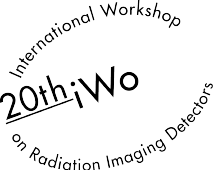Speaker
Description
This presentation outlines several advances in cluster analysis for hybrid pixel detectors. Hybrid pixel detectors are used by NASA for the radiation monitoring in a variety of space applications and different missions – namely deployment of several sensors on the International Space Station, as a sensor for radiobiology on the BioSentinel satellite and the radiation detector on the Orion Spacecraft. NASA’s monitors are based on the Timepix detector produced by the Medipix2 collaboration.
NASA has historically required sensors to measure radiation dose levels and particle stopping power. Recently there is a need to gather more detailed information about the radiation field, especially for future Exploration Missions which will carry humans outside of Low Earth Orbit for the first time in 50 years.
We have previously shown that hybrid pixel detectors can be utilized as a ‘single layer particle telescope’, where the long tracks extending over many pixels are selected for more detailed analysis. In this case, such a detector can be thought of as many independent subunits, each separately sampling the stopping power of a traversing particle.
This approach allows for more detailed analysis to be carried out on long clusters. For example, theoretical slowing curves can be compared to the measured using subunits. This enables unambiguous identification of the energy and charge of particles with energies less than 100 MeV/A. Similar methods can be used to identify nuclear interactions in the silicon sensor.
More information can also be gathered about the energy of fast particles using maximum likelihood reconstruction of the stopping power measurement in each subunit. In this case the energy of interacting particles can be reconstructed far more accurately than via a single stopping power measurement of a whole cluster.
Furthermore delta electrons can be used as a veto on the maximum particle energy, as well as in a probabilistic manor to estimate particle charge and energy. A combination of these tests allows for charge and energy binning using a single hybrid pixel detector as shown in figure 1.
Figure (1) – Example of testing of measured slowing curves (red) against theoretical cases (blue) and identification of delta electron. Due to the presence of the energetic delta-ray, this particle was identified as a carbon ion. Example performance shown on right.
